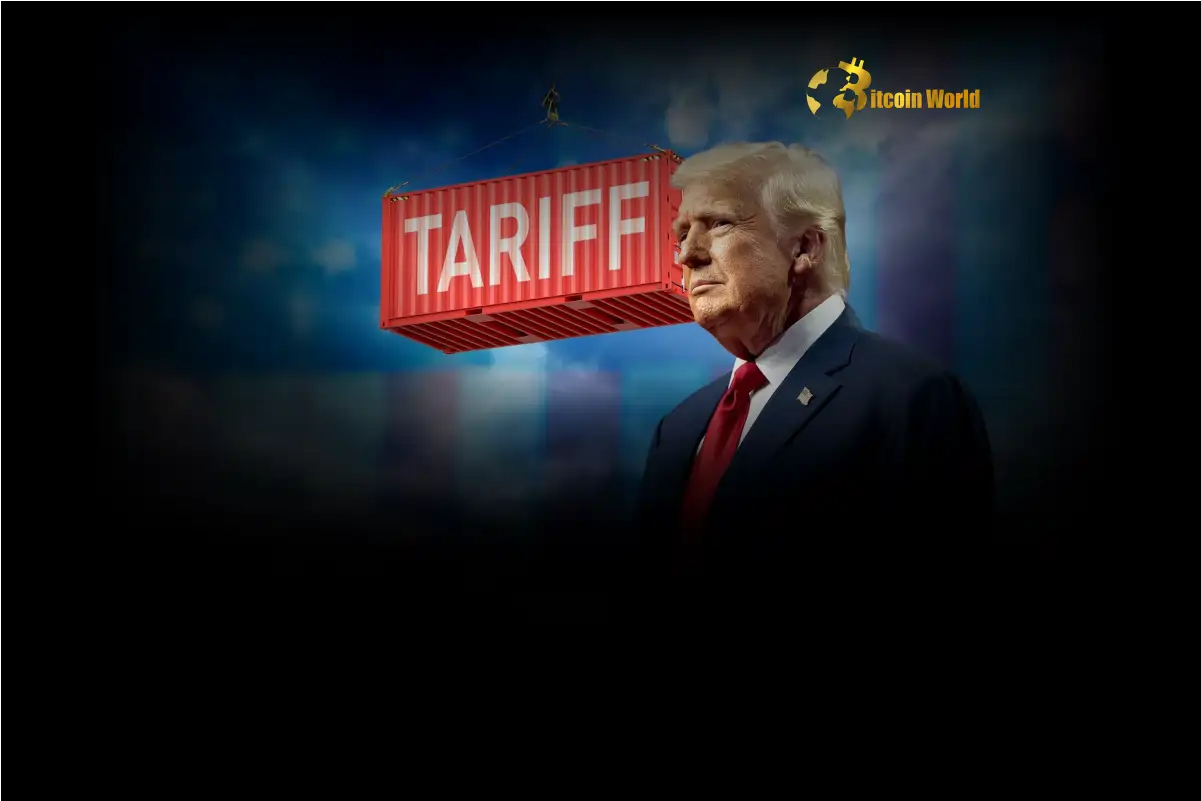Navigating the volatile world of cryptocurrency and forex requires staying ahead of global economic shifts. Right now, all eyes are on Asia as Asian FX markets are showing signs of weakness. Why? The shadow of former US President Trump’s impending tariff hikes is casting a long shadow, just as the Reserve Bank of Australia (RBA) decided to hold steady on interest rates. Let’s dive into what this means for the forex landscape and what you need to watch out for.
Why is Asian FX Under Pressure? The Trump Tariffs Factor
The primary driver behind the current unease in Asian FX markets is the looming threat of increased tariffs. Former President Trump’s April 2 tariffs are fast approaching, and the anticipation is sending ripples through global markets, particularly impacting Asian economies heavily reliant on exports. These tariffs, if implemented, are expected to:
- Increase Import Costs: Tariffs essentially act as taxes on imported goods. Higher tariffs mean increased costs for businesses importing goods into the US, potentially leading to reduced demand for Asian exports.
- Disrupt Supply Chains: Global supply chains are intricately linked. Tariffs can disrupt these chains, causing uncertainty and impacting manufacturing and trade across Asia.
- Weaken Asian Currencies: Anticipation of reduced exports and economic slowdown often leads to a weakening of Asian currencies against the US dollar, as investors seek safer havens and anticipate reduced economic activity in the region.
- Fuel Trade Tensions: These tariffs could escalate trade tensions, leading to retaliatory measures and further instability in the global trade environment, negatively impacting Asian FX.
For crypto enthusiasts and traders, understanding these forex movements is crucial. Cryptocurrency markets often react to broader economic trends, and weakness in Asian FX can sometimes signal shifts in global risk sentiment that can indirectly impact digital assets.
Aussie Dollar Flat After RBA Hold: What Does it Mean?
In the midst of this tariff storm, the Reserve Bank of Australia (RBA) decided to hold interest rates steady. This decision has left the Australian dollar (AUD) relatively flat. But what’s the bigger picture here? Let’s break it down:
- RBA’s Cautious Stance: Holding rates steady suggests a cautious approach by the RBA. They are likely monitoring global economic uncertainties, including the potential impact of Trump tariffs, before making further moves on interest rates.
- Balancing Inflation and Growth: Central banks like the RBA must balance controlling inflation with supporting economic growth. Holding rates might indicate a concern about dampening growth too much in an already uncertain global environment.
- Limited Immediate Impact on AUD: The ‘hold’ decision was largely expected, which is why the Aussie dollar remained relatively flat. However, the currency’s future direction will heavily depend on how the tariff situation unfolds and future RBA decisions.
- Opportunity or Caution for Traders?: A flat Aussie dollar in a volatile forex market can present both opportunities and challenges for traders. It might signal a period of consolidation before a larger move, but also requires careful monitoring of global economic news and RBA statements.
Decoding the Forex Market Jitters: Beyond Tariffs and RBA
While Trump tariffs and the RBA’s decision are significant factors, the broader forex market sentiment is influenced by a complex interplay of global economic indicators and geopolitical events. What else is contributing to the current jitters?
| Factor | Impact on Forex Markets |
|---|---|
| Global Inflation Concerns | Persistent inflation in major economies is keeping central banks on their toes, influencing interest rate expectations and currency valuations. |
| Geopolitical Instability | Ongoing conflicts and geopolitical tensions create uncertainty, driving investors towards safe-haven currencies like the US dollar and impacting riskier assets, including some Asian FX. |
| Economic Data Releases | Key economic data from major economies (e.g., GDP growth, employment figures) can trigger significant movements in the forex market as they shape expectations about future economic performance and central bank policies. |
| Central Bank Communication | Statements and signals from central banks regarding their future policy intentions are closely watched by the market and can significantly influence currency valuations. |
Navigating Currency Weakness: Actionable Insights for Crypto and Forex Traders
So, what can you do to navigate these turbulent currency weakness waters? Here are some actionable insights:
- Stay Informed: Keep a close watch on global economic news, particularly updates on trade policies, Trump tariffs developments, and central bank announcements.
- Diversify Your Portfolio: Diversification is key in volatile markets. Consider diversifying your crypto and forex portfolio to mitigate risks associated with Asian FX weakness.
- Monitor Risk Sentiment: Pay attention to indicators of global risk sentiment. Increased risk aversion often strengthens the US dollar and can put further pressure on Asian currencies.
- Use Technical Analysis: Employ technical analysis tools to identify potential trading opportunities in both crypto and forex markets, considering the current volatility and uncertainty.
- Manage Risk Prudently: Always use appropriate risk management strategies, such as stop-loss orders, to protect your capital in these uncertain times.
The Road Ahead for Asian FX: Resilience or Further Decline?
The future trajectory of Asian FX hinges on several factors. The actual implementation and scope of Trump tariffs will be crucial. Furthermore, how Asian economies respond to these challenges and the future policy decisions of central banks in the region will play a vital role. While the current outlook presents challenges, Asian economies have shown resilience in the past. Whether they can weather this storm and rebound remains to be seen. For traders and investors, staying vigilant and adaptable is paramount in this evolving landscape.
To learn more about the latest Forex market trends, explore our article on key developments shaping currency valuations and global economic liquidity.






